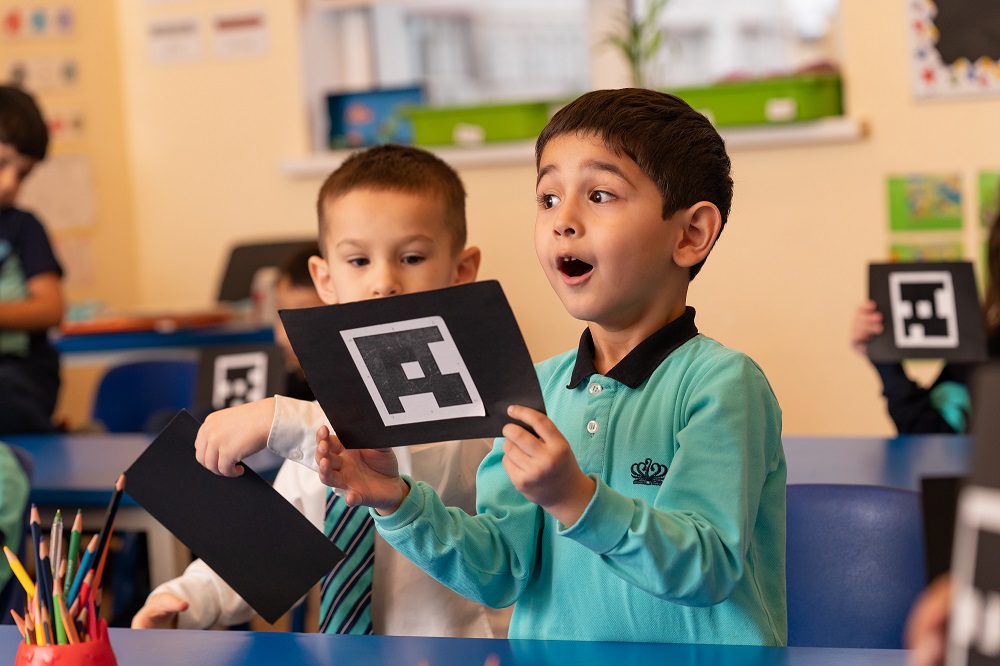We use cookies to improve your online experiences. To learn more and choose your cookies options, please refer to our cookie policy.

By the end of year 6, pupils’ reading and writing should be sufficiently fluent and effortless for them to manage the general demands of the curriculum in year 7, across all subjects and not just in English.
Department for Education (2013). The National Curriculum in England framework document.
How do we learn to read?
Much like breathing, we might often take our ability to read for granted. Whether scrolling through the day’s news or indulging in a classic novel, the mechanics of reading seldom cross our mind. But how did we get here? We weren’t always able to read… To the non-teacher, this question baffles the mind. So, how do we become readers?
Once I became a teacher, I soon realised that the way to learn to read – at least according to the National Curriculum for England – is by starting with phonics. Parents of students at our Sayram campus may have heard this particular lesson name-dropped at home.
‘Synthetic phonics’ may seem like a fancy term to you and I, but it essentially teaches learners to understand the building blocks of language and later understand words for themselves. Think of it this way: could you attempt to read the word ‘cat’ without knowing ‘c’, ‘a’ and ‘t’ first?
The BST approach
Here at BST we teach reading by introducing students to letter sounds. Imagine for a moment that you do not know the meaning of ‘s’. This in itself is a lesson. Students learn this all through reading, listening, saying and writing. Add another letter sound, and another letter sound, and you soon start to build a repertoire of letter sounds.
Once students become familiar with English letter sounds, they are ready to explore other sounds, often made by combinations of already-known letters. Take, for example, the digraph ‘oo’ or the trigraph ‘igh’. With just a few sounds in their phonic knowledge, students can already start blending.
What is blending, you ask? Blending is the process of joining sounds together to make a word. This is where our example of the word ‘cat’ comes into play. This is when students understand that the separate sounds ‘c’, ‘a’ and ‘t’, when written together, form the word ‘cat’. At this stage, students can begin to draw meaning from what they read.
From this point, BST phonics lessons focus on building on students’ knowledge of the many sounds of the English language. Earlier graphemes (groups of letters representing a sound) might be as familiar as ‘oo’ or ‘ee’, but how many sounds could be interpreted from ‘eigh’ or ‘ough’ later on in their reading journey?[1]
Tailored support
At BST we also understand that different students can move at different paces on their respective learning journeys. As such, our phonics lessons are tailored to students’ current needs. With half-termly assessments and our day-to-day teaching, we gauge whether students are ready for the next stage in their reading journey. This way, all students benefit from tailored support in learning to read. Those new to English may be learning their initial letter sounds, however, many progress very quickly through the reading levels all the way through to comprehension.
Comprehension
Once students become ‘fluent’ readers of English, they begin to make sense of their reading. This is the point at which we can focus on comprehension, or really understanding a text. Vocabulary and understanding are developed through routines in lessons, for example reading a text independently or in a pair followed by rich discussion about the text. Discussion involves pertinent questioning, and questioning ranges from literal (for example, Find X in the text) to inferential (How might this character be feeling? Why?). Readers at this level can now read for information, understanding and even for pleasure independently.
Reading for pleasure
No matter the level of their reading, we want all students to read but also to read for pleasure. Our weekly guided reading lessons and library sessions are a great way for us to instil a love of reading in all learners. Students thrive at the opportunity to read to an adult, no matter their level, and targeted support is available to them during weekly one-on-one reading sessions with their class teacher and TLA.
We also like to celebrate reading as a school. We do this with our annual Book Week to get students excited about reading. Dress-up days and ‘extreme reading’ competitions are always engaging and lots of fun!
What can you do?
We strongly believe that a love of reading can also be fostered at home. We encourage all of our students to practise reading for 10 to 15 minutes daily with an adult at home. Levelled ‘home reader’ books are a great way for our students to build confidence in reading independently and at an appropriate pace. Making use of our school library and choosing a new book each week is also an exciting way for students to get them enthused about reading. Sharing books and reading experiences at home is also a great routine and pastime for your child to enjoy and remember forever.
[1] For those particularly keen to test their English phonic knowledge, I highly recommend that you read T S Watt’s pronunciation poem written in 1954.